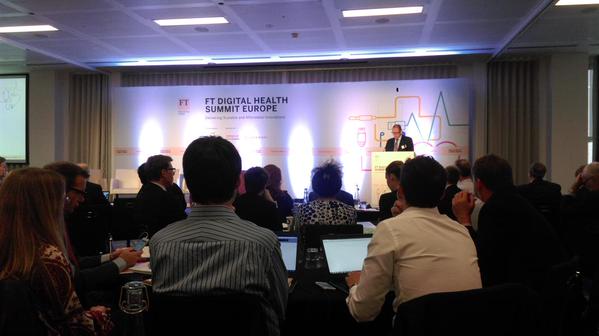Facilitating collaboration in digital health: the role of communications
13th June 2015 by Mark Chamberlain

There are three main takeaways I got from the FT Digital Health Summit Europe (#FTDigHealth) this week:
- We are on the brink of a healthcare revolution, but it’s going to be a slow, steady burn rather than a sudden big bang. It may, in fact, be more appropriate to talk about ‘evolution’ than ‘revolution’.
- The increasing uptake of digital will be driven by a variety of stakeholders, but patients may prove to be the most important. Consumers are already used to accessing all sorts of services from their smartphones after all.
- To fully take advantage of the opportunities presented by digital and to bring about meaningful change, collaboration among stakeholders is key.
There are considerations for communications around each of these points, but I’m going to focus here on the third.
Everyone acknowledges that there needs to be greater integration of skill-sets to push the digital health field forward. The players include pharma, biotech, digital, med-tech, patients, clinicians, payers and governments. There are two main ways integration among these groups can be realised.
One way is for pharma to build a non-traditional workforce comprising expertise from other relevant sectors. There was discussion of this approach during the summit, and it was acknowledged that doing this fully and effectively is going to take a very long time. Fundamentally different R&D models will need to be created.
The other approach is to establish partnerships between existing entities, bringing companies and other players together on a project-by-project basis. Both approaches should and will be pursued, but it is the latter that is going to get results sooner and where communications has a unique role to play.
Communicators are in the business of engaging with stakeholders on behalf of our clients (or on behalf of our employers for those working in-house) with the aim of bringing about some sort of positive change. Part of the challenge often involves working out how to share industry-specific information with people and groups who live and work outside that industry, and therefore do not share the same background knowledge and may approach things from a very different viewpoint.
We deal with this by getting under the skin of our clients’ businesses, understanding the interests and motivations of those they want to engage with and then, using various tools and techniques, bridging the two. In digital health, there is some uniquely challenging bridging that needs to be done in order to facilitate partnerships.
I heard it remarked a couple of times during the summit that you can easily tell which delegates were from pharma and which were from tech: the pharma guys were in suits, the tech guys weren’t. The joke speaks to a serious point. While there is a common interest in innovation and collaboration, the various stakeholders in digital health occupy different worlds and they need to give careful thought to how they’re going to engage each other when exploring partnership opportunities.
There is a risk that great would-be partnerships never see the light of day simply because the different parties have misunderstood each other. Good communications – which is about bridging worlds – can ensure this doesn’t happen.